The Middle East, a region renowned for its historical and cultural significance, is also home to a fascinating array of animals that have adapted to its unique landscapes. From the vast deserts to lush oases, and from soaring mountain ranges to azure coastlines, the Middle East harbors a diverse and captivating range of wildlife.
These all animals of the Middle East have not only survived the challenges posed by the region’s arid climate and geographical complexities but have also woven themselves into the tapestry of local cultures and ecosystems. In this exploration, we delve into the intriguing world of Middle Eastern animals, discovering their remarkable adaptations, roles in the ecosystem, and their intertwined relationship with the people who share their habitat.
Table of Contents
All Animals of the Middle East And Their Unique ecosystems and habitats
In the Middle East, diverse ecosystems have flourished amid challenging environments. From scorching deserts to lush oases and wetlands, the region’s landscapes offer distinct habitats. These ecosystems showcase life’s resilience and play a vital role in maintaining balance. Species like the camel and sand gazelle have evolved specialized adaptations, reflecting the intricate dance between animals and their surroundings.
These habitats also hold cultural and economic importance, shaping traditions, livelihoods, and even tourism. Preserving these ecosystems becomes imperative in the face of modern challenges, ensuring the continuity of both natural heritage and sustainable environments.
List of Animals of the Middle East
Camels
Desert foxes
Jerboas
Golden eagles
Lappet-faced vultures
Barn owls
Nile tilapia
Socotra cormorant
Arabian Oryx
Nubian ibex
Arabian leopard
Camels
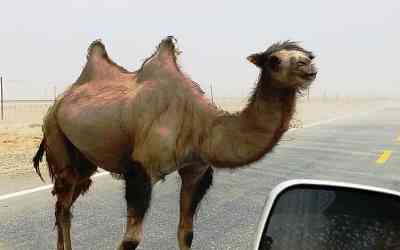
Camels, iconic to the Middle East, thrive in its arid expanse. Adapted marvelously to desert life, their humps store fat, not water. Dromedaries, with single humps, and Bactrian camels, with two, endure extreme temperatures and vast landscapes. Essential to locals for transport and resources, these creatures embody the region’s resilience.
Desert foxes
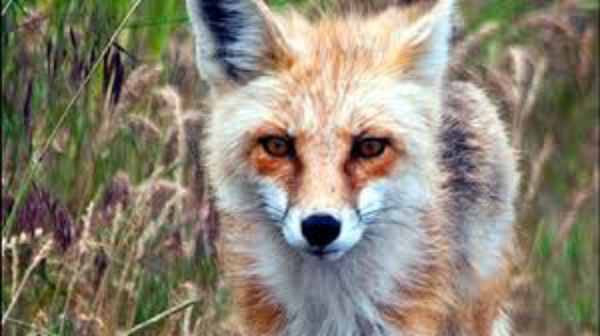
Desert foxes, inhabitants of arid landscapes including the Middle East, exhibit remarkable survival strategies. Their sandy coats provide camouflage, aiding in stealthy hunting. Nocturnal and omnivorous, they feast on small prey and plants. These adaptable creatures embody nature’s ingenuity, seamlessly navigating the challenges of their harsh desert homes.
Jerboas
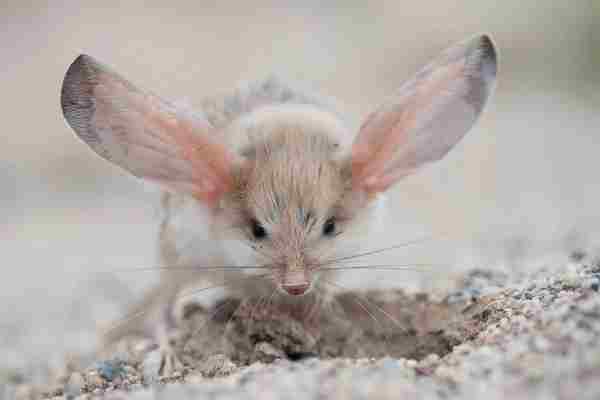
Jerboas, enchanting denizens of the Middle East’s deserts, are known for their unique adaptations. With kangaroo-like hind legs and a long tufted tail, they’re exceptional jumpers, evading predators and finding food. Their soft fur insulates against temperature extremes. These small, nocturnal creatures symbolize nature’s diversity and the wonders of desert ecosystems.
Golden eagles
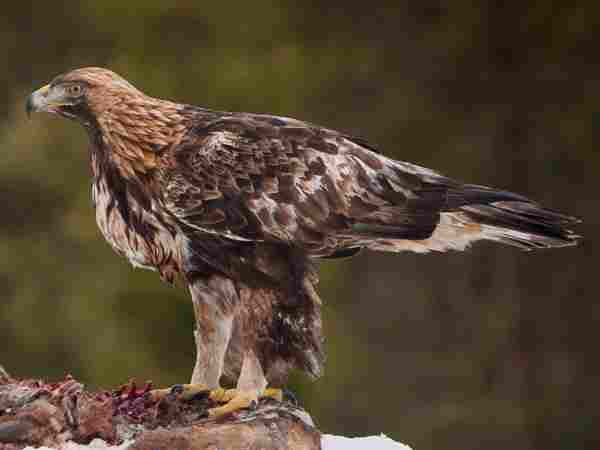
Golden eagles, majestic raptors gracing the Middle East’s skies, command awe and reverence. With wingspans up to 7 feet, they soar at impressive altitudes, displaying keen predatory prowess. Revered in local cultures, these eagles symbolize power and freedom, playing an integral role in maintaining the ecological balance of the region’s diverse habitats.
Lappet-faced vultures

Lappet-faced vultures, striking and essential to the Middle East’s ecosystems, are nature’s cleanup crew. Their massive size and distinctive lappets on their necks set them apart. They devour carrion, preventing disease spread. Regal in flight, these vultures offer vital ecological services, embodying nature’s harmonious cycle in the arid landscapes they inhabit.
Barn owls
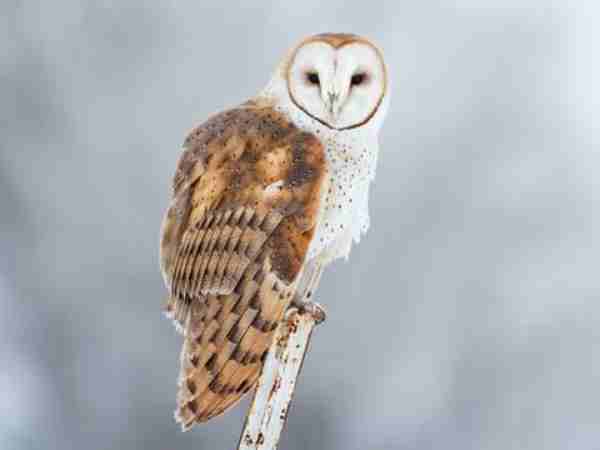
Barn owls, ghostly inhabitants of the Middle East’s night, are silent hunters and nature’s pest controllers. Their heart-shaped faces aid in capturing sound, ensuring precise strikes on small mammals. Revered for wisdom in some cultures, these nocturnal raptors exemplify the beauty and adaptability of wildlife in the region’s diverse ecosystems.
Nile tilapia

Nile tilapia, widespread in the Middle East’s freshwater bodies, are prized for both sustenance and aquaculture. Resilient and adaptable, they flourish in varying conditions. As a vital protein source, these fish play a crucial role in local diets and economies. Their success highlights the intersection of nature and human ingenuity in the region’s aquatic landscapes.
Socotra cormorant

The Socotra cormorant, a distinctive seabird found along the coasts of the Middle East, possesses a striking appearance with its turquoise eyes and white plumage. Nesting in colonies, they fish in coastal waters, playing a role in maintaining marine ecosystems. However, habitat loss and pollution threaten their numbers, underscoring the need for conservation efforts to protect these unique birds.
Arabian Oryx

The Arabian Oryx, a symbol of resilience, was once extinct in the wild but was successfully reintroduced to the deserts of the Middle East. With distinctive curved horns and a stark white coat, it’s well adapted to arid environments. This conservation success story demonstrates the power of human dedication in preserving the region’s charismatic and endangered wildlife.
Nubian ibex
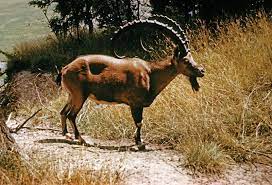
The Nubian ibex, a master of rocky terrains in the Middle East, navigates cliffs with remarkable agility. Its majestic curved horns are a symbol of adaptation and survival in arid landscapes. From the desolate deserts to rugged mountain slopes, this sure-footed herbivore represents the harmonious coexistence of wildlife with the region’s challenging geography.
Arabian leopard

The elusive Arabian leopard, a rare and endangered predator, once roamed the Middle East’s mountains and deserts. Its golden coat and solitary nature evoke mystery and respect. Habitat loss and poaching have severely reduced its numbers, making conservation efforts vital to safeguarding this emblem of the region’s wild beauty and ecological balance.
Threats to Biodiversity For Animals of the Middle East
The Middle East faces numerous threats to biodiversity, placing its unique animal species at risk. Habitat loss stands out as a prominent concern, driven by urbanization, agriculture expansion, and infrastructure development. As natural landscapes give way to human activities, many animals lose their homes and struggle to survive. Climate change exacerbates the situation, leading to shifts in temperature and precipitation patterns that disrupt ecosystems and migration routes.
Overexploitation of wildlife for trade, traditional medicine, and trophies further imperils species like the Arabian leopard and the Arabian oryx. Pollution, including oil spills in the region’s waters, compounds these challenges, contaminating habitats and affecting aquatic life. Invasive species, often introduced through global trade, outcompete native species and disrupt delicate ecological balances.
Addressing these threats necessitates regional cooperation, conservation initiatives, and sustainable development practices that recognize the intrinsic value of the Middle East’s biodiversity and aim to preserve its animal inhabitants for future generations.
Conservation Initiatives for Animals in the Middle East
Conservation initiatives are gaining momentum to counter the threats to its unique biodiversity. Efforts are focused on safeguarding vulnerable species and their habitats. Protected areas, such as wildlife reserves and national parks, are being established to provide safe havens for animals like the Arabian oryx and Iranian cheetah.
These spaces allow for habitat restoration and controlled breeding programs. Collaborative projects between governments, NGOs, and local communities are emphasizing public awareness and education, fostering a sense of responsibility for wildlife conservation.
Additionally, sustainable development practices are being promoted to mitigate habitat loss and degradation caused by urbanization and agriculture. International cooperation plays a vital role, aiding in the exchange of knowledge, technology, and funding. By combining scientific research, legislative measures, and community involvement, these initiatives strive to secure the Middle East’s remarkable animal diversity and ensure a harmonious coexistence between humans and wildlife.
Final Words
The Middle East’s diverse tapestry is intricately woven with the presence of captivating animals that embody the region’s rich ecological significance. From the enigmatic Arabian oryx, a symbol of resilience, to the graceful leaps of Nubian ibexes across rugged terrains, and the elusive sand cats leaving their traces in the desert’s golden sands – these animals are living testaments to the harmonious yet demanding dance between life and environment.
As the Middle East navigates the modern world, safeguarding these creatures signifies a commitment to preserving the intricate threads of history, nature, and identity that continue to shape this remarkable region.
Reference:
- https://animals.sandiegozoo.org/regions/middle-east
- https://www.arabnews.com/node/1871931/6-marine-animals-found-middle-east
- https://english.alarabiya.net/features/2021/07/25/The-most-dangerous-animals-native-to-the-Arabian-Peninsula
A motivated philosophy graduate and student of wildlife conservation with a deep interest in human-wildlife relationships, including wildlife communication, environmental education, and conservation anthropology. Offers strong interpersonal, research, writing, and creativity skills.










